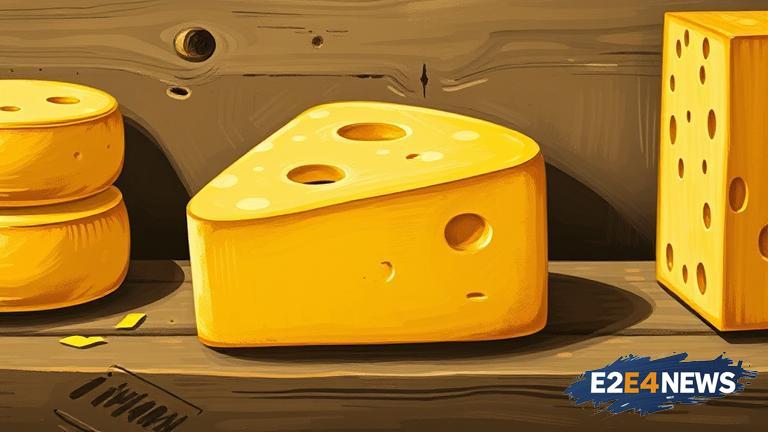Wisconsin has long been known as the cheese capital of the United States, and for good reason. The state’s rich dairy farming heritage, combined with its favorable climate and geography, make it an ideal place for cheese production. With over 25% of the country’s total cheese output coming from Wisconsin, it’s clear that the state is a major player in the industry. The state’s cheese production is valued at over $1.2 billion annually, with popular varieties like cheddar, mozzarella, and feta being produced in large quantities. Wisconsin’s cheese makers use a combination of traditional techniques and modern technology to produce a wide range of cheeses, from soft-ripened brie to aged gouda. The state is home to a number of large cheese producers, including Sargento and BelGioioso, as well as many smaller, artisanal cheese makers. These smaller producers often specialize in unique and innovative cheese varieties, such as truffle-infused cheddar or goat cheese with figs. In addition to its economic impact, Wisconsin’s cheese industry also plays a significant role in the state’s culture and tourism. Visitors from all over the country come to Wisconsin to sample its famous cheeses, visit cheese factories, and attend cheese-themed festivals. The state’s cheese industry is also supported by a number of organizations, including the Wisconsin Cheese Makers Association and the Wisconsin Dairy Products Association. These organizations work to promote the state’s cheese industry, provide support to cheese makers, and advocate for policies that benefit the industry. Despite its dominance in the cheese market, Wisconsin’s cheese industry is not without its challenges. The state’s cheese makers must contend with factors such as fluctuating milk prices, changing consumer preferences, and increasing competition from other cheese-producing states. However, with its strong heritage and commitment to quality, Wisconsin’s cheese industry is well-positioned to continue thriving in the years to come. In fact, the state’s cheese production is expected to continue growing, with some estimates suggesting that it could increase by as much as 10% in the next few years. This growth will be driven by a combination of factors, including increasing demand for specialty cheeses, growing interest in artisanal and farm-to-table products, and advancements in cheese-making technology. As the demand for Wisconsin cheese continues to grow, the state’s cheese makers are investing in new equipment, expanding their product lines, and exploring new markets. Whether you’re a cheese aficionado or just a casual fan, Wisconsin’s cheese industry has something to offer. From its rich history and cultural significance to its wide range of delicious cheese varieties, Wisconsin is a must-visit destination for anyone who loves cheese.
